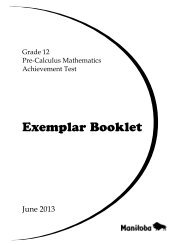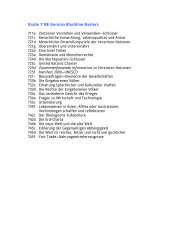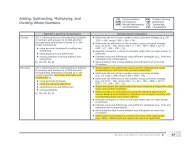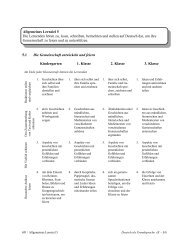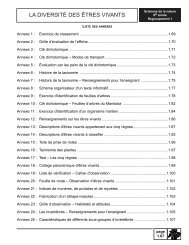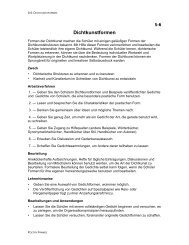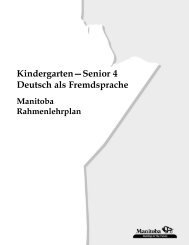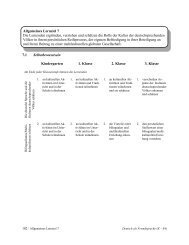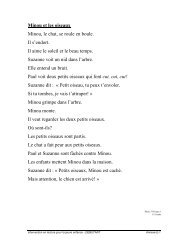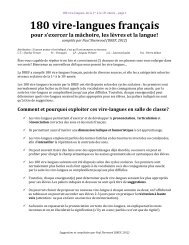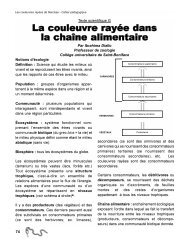Lesson 3: Anxiety and Depression
Lesson 3: Anxiety and Depression
Lesson 3: Anxiety and Depression
You also want an ePaper? Increase the reach of your titles
YUMPU automatically turns print PDFs into web optimized ePapers that Google loves.
Signs <strong>and</strong> Symptoms<br />
The two main symptoms associated with depression are lack of interest in normal daily<br />
living, even in the activities that are enjoyable, <strong>and</strong> feeling miserable or “down in the<br />
dumps.” A depressed person shows feelings of sadness <strong>and</strong> helplessness, or may cry<br />
often.<br />
A health professional would also look for other signs <strong>and</strong> symptoms lasting at least two<br />
weeks, such as changes in sleep patterns, concentration, weight or eating patterns,<br />
demeanour (more irritable), self-esteem, <strong>and</strong> desire to live. Physical complaints, such as<br />
gastrointestinal problems (indigestion, constipation, or diarrhoea), headache, <strong>and</strong><br />
backache may also be signs.<br />
Different age groups may react differently to depression. Sometimes it is confusing to<br />
determine what the actual problem is because the behaviour is a cover-up for the real<br />
problem. For example, children may pretend to be sick, worry about being bullied, not do<br />
well in school, or act out to cover up their feelings of sadness. Older people may focus<br />
more on complaining about the physical symptoms of depression than on what situations<br />
or emotions are causing them to feel that way.<br />
The primary types of depression include major depression, dysthymia, adjustment<br />
disorders, bipolar disorder, <strong>and</strong> seasonal affective disorder (Mayo Clinic). These types of<br />
depression have similarities <strong>and</strong> differences. It is important that people who suffer from<br />
depression obtain proper diagnosis from a medical professional rather than attempting<br />
self-diagnosis.<br />
R EFERENCES<br />
For additional information on the signs <strong>and</strong> symptoms of depression <strong>and</strong> definitions of the<br />
primary types of depression, refer to the following websites:<br />
Canadian Mental Health Association. Mental Health <strong>and</strong> High School.<br />
.<br />
Finding Optimism: Health in Response to Mental Health. “Things to Say to Someone with<br />
<strong>Depression</strong>.” Healthy Mind. .<br />
Health Canada. “Chapter 2: Mood Disorders.” A Report on Mental Illnesses in Canada.<br />
Ottawa, ON: Health Canada, 2002. Available on the Public Health Agency of Canada<br />
website at .<br />
Mayo Clinic. <strong>Depression</strong>.<br />
.<br />
For website updates, please visit Websites to Support the Grades 11 <strong>and</strong> 12 Curriculum at<br />
.<br />
________________________________________________________________________________<br />
_____________________________________________________________________________<br />
Module C, <strong>Lesson</strong> 3 229 •



